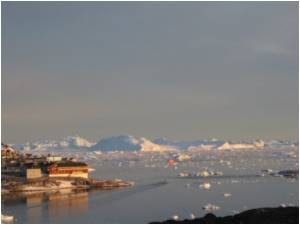Greenland Ice Sheets set new records for melting in 2010, says a new study. The 'exceptional' season stretched up to 50 days longer than the average time.

"Melting in 2010 started exceptionally early at the end of April and ended quite late in mid- September."
Tedesco and his team examined surface temperature anomalies over the Greenland ice sheet surface, as well as estimates of surface melting from satellite data, ground observations and models.
The team noted that in 2010, summer temperatures up to 3C above the average were combined with reduced snowfall. Bare ice was exposed earlier than the average and longer than previous years, contributing to the extreme record.
"Bare ice is much darker than snow and absorbs more solar radiation. Other ice melting feedback loops that we are examining include the impact of lakes on the glacial surface, of dust and soot deposited over the ice sheet and how surface meltwater affects the flow of the ice toward the ocean," said Tedesco.
WWF climate specialist Dr. Martin Sommerkorn said "Sea level rise is expected to top 1 metre by 2100, largely due to melting from ice sheets. And it will not stop there - the longer we take to limit greenhouse gas production, the more melting and water level rise will continue."
Advertisement
Source-ANI









